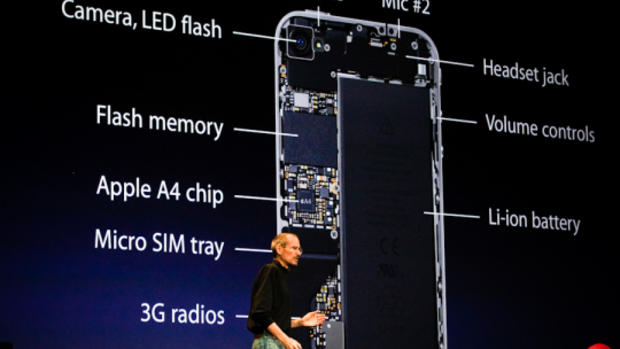Consumer Reports: Why We Can't Recommend the iPhone 4
Consumer Reports said on Monday that it could not recommend the iPhone 4 because of lingering reception problems.
The testing firm also challenged Apple's official explanation that explained issues with the Phone 4's signal-strength as due to software that "mistakenly displays 2 more bars than it should for a given signal strength."
When reports of problems with Apple's new device first surfaced, Consumer Reports at first informally gave the all-clear sign. But after its engineers put the iPhone 4 through a battery of tests, Consumer Reports said that was unwilling to recommend the unit:
"...We reached this conclusion after testing all three of our iPhone 4s (purchased at three separate retailers in the New York area) in the controlled environment of CU's radio frequency (RF) isolation chamber. In this room, which is impervious to outside radio signals, our test engineers connected the phones to our base-station emulator, a device that simulates carrier cell towers (see video: IPhone 4 Design Defect Confirmed). We also tested several other AT&T phones the same way, including the iPhone 3G S and the Palm Pre. None of those phones had the signal-loss problems of the iPhone 4.
Our findings call into question the recent claim by Apple that the iPhone 4's signal-strength issues were largely an optical illusion caused by faulty software that "mistakenly displays 2 more bars than it should for a given signal strength."
The tests also indicate that AT&T's network might not be the primary suspect in the iPhone 4's much-reported signal woes.
In an interview with CBSNews.com, Mike Gikas, a senior editor at Consumer Reports, said that the iPhone 4 received high scores, generally. But he said the reception problem prevented Consumer Reports from recommending customers buy the unit, the first time it has refrained from recommending an iPhone.
"If Apple intimated this was a display problem because of software, that's not what our tests found," he said. "What Apple found may be true but that's not the problem. When you touch the phone there, there is significant signal loss."
In the meantime, Consumer Reports suggests a work-around: "Cover the antenna gap with a piece of duct tape or another thick, non-conductive material. It may not be pretty, but it works. We also expect that using a case would remedy the problem."
Apple did not return a request for comment.

